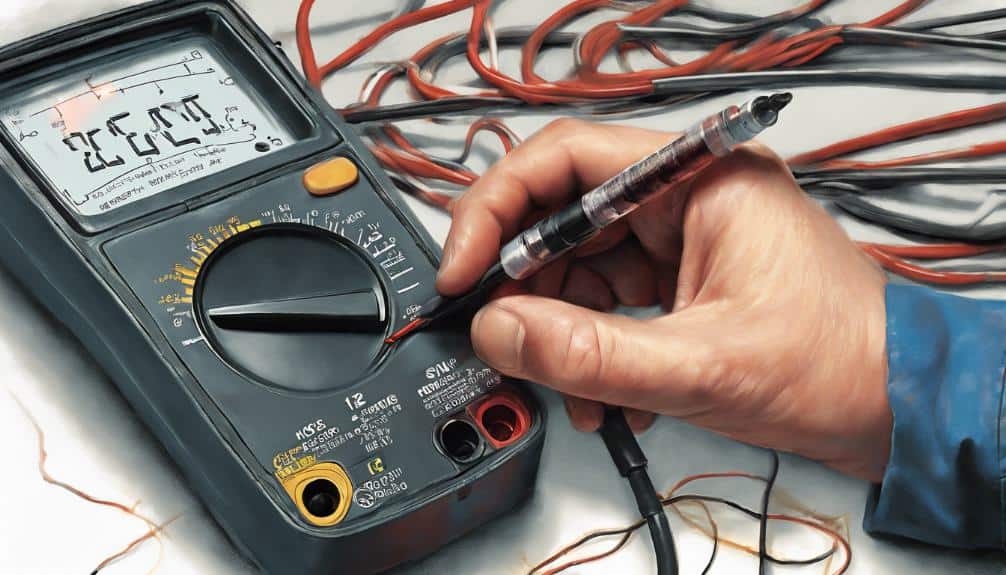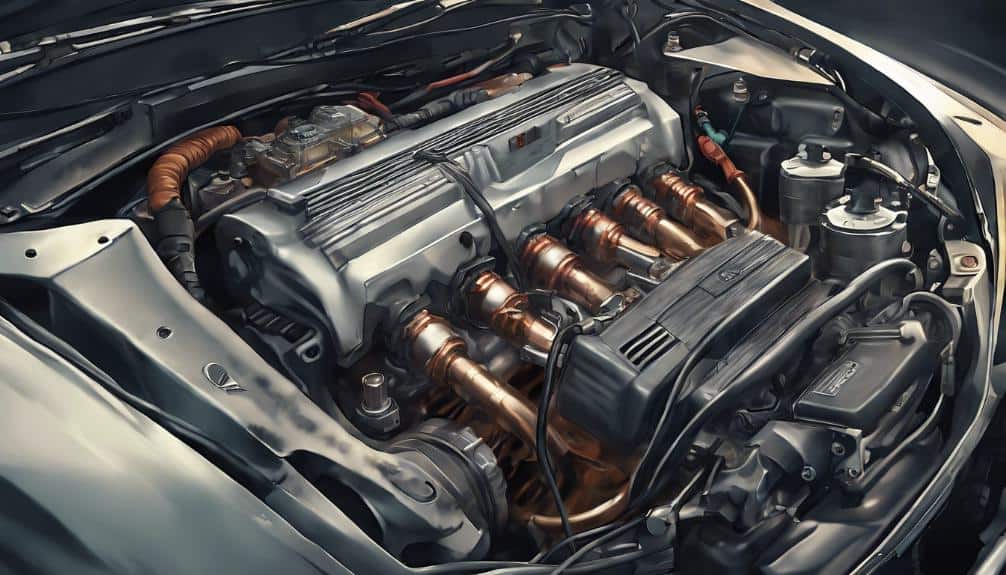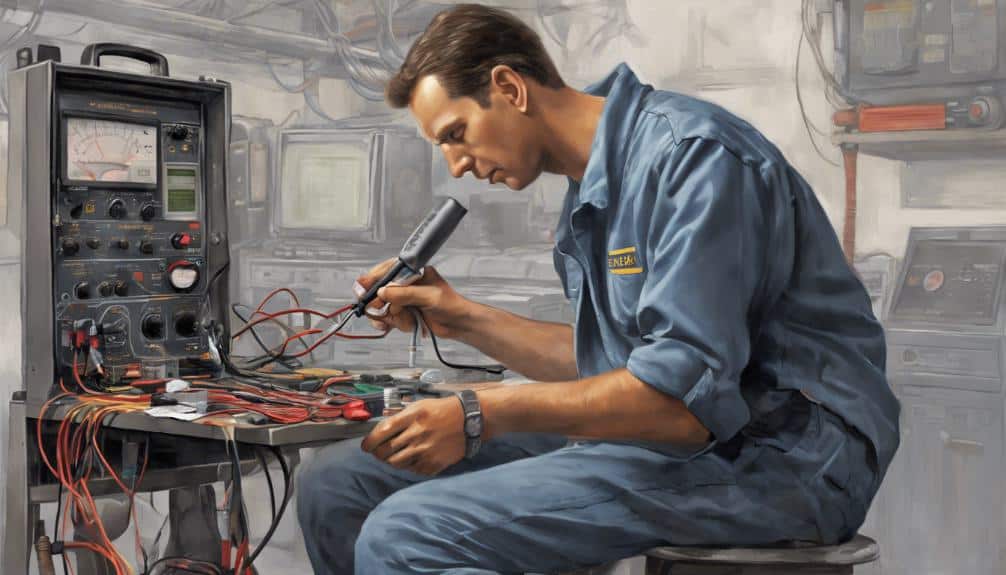When diagnosing the P0036 code affecting your HO2S Heater Control Circuit, understanding the underlying causes is important.
Your car’s performance is directly impacted by this issue, leading to various noticeable symptoms.
By taking proactive measures and following a systematic approach to troubleshooting, you can effectively address the problem at hand.
Key Points
- Inspect O2 sensor connector for proper connection under engine cover.
- Test resistance of sensor connector using a digital ohm meter.
- Swap sensor connectors and conduct resistance tests to identify faulty sensor.
- Replace sensor with a new one after confirming heater circuit issue.
- Ensure regular inspection of sensor connectors and wiring to prevent future faults.
Understanding the P0036 Trouble Code

To grasp the implications of the P0036 trouble code, understand that it pertains to the HO2S Heater Control Circuit Bank 1 Sensor 2.
When dealing with P0036, diagnostic procedures are essential.
This code signals a problem with the heater circuit of the oxygen sensor positioned after the catalytic converter. If left unaddressed, P0036 can impact emissions negatively.
Increased fuel consumption and potential engine performance issues may arise, leading to potential failures during emission testing.
Resolving P0036 involves thorough troubleshooting. Technicians need to inspect the sensor’s wiring, connector, and heater circuit for faults.
Typically, fixing P0036 necessitates replacing the faulty sensor and clearing the trouble code after completing the repairs.
Symptoms of a P0036 Code
If your vehicle is experiencing symptoms of a P0036 code, such as reduced engine performance or increased fuel consumption, it could indicate issues with the HO2S Heater Control Circuit Bank 1 Sensor 2.
Performance issues like rough idling, hesitation during acceleration, or a noticeable decrease in power output may be linked to this code.
Then, you might observe a drop in fuel efficiency, requiring more frequent visits to the gas station for refueling.
These symptoms are vital indicators of a potential problem with the oxygen sensor’s heating element, affecting the engine’s ability to regulate fuel-air mixture accurately.
When your vehicle displays these signs, it’s essential to address them promptly to prevent further damage.
Ignoring these symptoms could lead to inefficient operation of the catalytic converter, activation of failsafe mode, or even failure to pass emission tests.
Therefore, taking action as soon as the P0036 code manifests can help maintain your vehicle’s performance and prevent more severe issues down the road.
How Does Fixing the Thermostat Heater Control Circuit High Relate to Troubleshooting the HO2S Heater Control Circuit?
When troubleshooting the HO2S heater control circuit, it’s essential to also consider the thermostat heater control circuit. The two are related because they both involve controlling the heating elements in different parts of the vehicle. Addressing issues in one circuit may uncover problems in the other.
Common Causes of P0036 Code

One prevalent cause of the P0036 code is issues related to the heater circuit of the O2 sensor.
Problems such as broken heater wires, incorrect wiring, or internal circuit failures can trigger this fault code. These issues may occur during exhaust system installation or due to rodent damage.
To diagnose these concerns, performing a heater circuit analysis is essential. This involves checking the sensor connector and conducting resistance tests using an ohm meter.
By inspecting the wiring, you can identify any faults that may be causing the P0036 code. Wiring inspection techniques play a significant role in pinpointing the root cause of the problem.
The code is activated when the computer detects continuity anomalies in the heater circuit, resulting in the immediate display of a fault code.
Conducting a thorough analysis of the heater circuit can help you address and rectify the underlying issues causing the P0036 code.
Steps to Fixing the P0036 Code
Inspect the O2 sensor connector under the engine cover to guarantee proper connection before proceeding with fixing the P0036 code. Use a digital ohm meter to test the resistance of the sensor connector.
Swap sensor connectors and conduct resistance tests to identify the faulty sensor. If you find zero resistance for Bank 1 Sensor 2 compared to Bank 2 Sensor 2, this may indicate a new sensor is needed.
After confirming the heater circuit issue, replace the sensor with a new one to resolve P0036. These diagnostic procedures and troubleshooting steps are essential in pinpointing the exact cause of the problem.
By following these steps and ensuring proper maintenance, such as timely sensor replacement, you can effectively address the P0036 trouble code.
Remember to handle sensor replacement with care and precision to ensure optimal performance of your vehicle’s HO2S heater control circuit.
Preventative Measures for Future Issues

To prevent future P0036 heater circuit issues, ensuring regular inspection of sensor connectors and wiring is vital.
Maintenance tips include checking for any signs of wear, corrosion, or damage to the connectors and wires.
Proper installation of exhaust systems is essential to avoid any potential damage to the heater wires, which can lead to circuit problems.
Also, preventive strategies involve protecting the wiring from rodents that are known to chew on wires, causing potential heater circuit issues.
When replacing sensors and components, opting for high-quality parts can reduce the likelihood of recurring P0036 faults.
Following proper diagnostic procedures and adhering to maintenance schedules can also help prevent future heater circuit problems.
As an Amazon Associate we earn from qualifying purchases.










